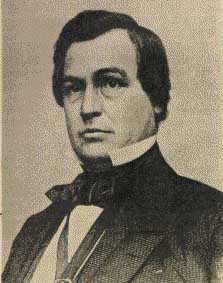Denver
 | image_flag = Flag of Denver, Colorado.svg
| image_seal = Seal of Denver, Colorado.svg
| image_blank_emblem = Denver Logo.png
| blank_emblem_type = Logo
| nicknames = The Mile High City
| image_flag = Flag of Denver, Colorado.svg
| image_seal = Seal of Denver, Colorado.svg
| image_blank_emblem = Denver Logo.png
| blank_emblem_type = Logo
| nicknames = The Mile High CityQueen City of the Plains
Wall Street of the West | image_map = ###### | zoom = SWITCH:9;5;3 | type = SWITCH:shape;point;point | marker = city | stroke-width = 2 | stroke-color = #0096FF | fill = #0096FF | fill-opacity = 0.2 | id2 = SWITCH:Q16554;Q1261;Q30 | type2 = shape-inverse | stroke-width2 = 2 | stroke-color2 = #5F5F5F | stroke-opacity2 = SWITCH:0;1;1 | fill2 = #000000 | fill-opacity2 = SWITCH:0;0.5;0.5 | switch = Denver;Colorado;the United States }}
|pushpin_map = USA#USA Colorado |pushpin_relief = yes |pushpin_label = Denver |pushpin_label_position = right |pushpin_map_caption = Location of the City and County of Denver, Colorado. |coordinates = |coordinates_footnotes = |subdivision_type = Country |subdivision_name = |subdivision_type1 = State |subdivision_name1 = |subdivision_type2 = City and county |subdivision_name2 = Denver | established_title = Platted | established_date = , as
Denver City, Kansas Territory | established_title2 = Incorporated | established_date2 = , as
Denver City, Colorado Territory | established_title3 = Consolidated | established_date3 = , as the
City and County of Denver | named_for = James W. Denver | seat_type = Seat | government_footnotes = | government_type = Consolidated city and county | governing_body = Denver City Council | leader_title = Mayor | leader_name = Mike Johnston (D) | leader_title1 = | leader_name1 = | unit_pref = US | total_type = Total | area_footnotes = | area_total_km2 = 400.739 | area_land_km2 = 396.463 | area_water_km2 = 4.276 | area_metro_km2 = 21763.67 | population_as_of = 2020 | population_footnotes = | population_est = 729019 | pop_est_as_of = 2024 | pop_est_footnotes = | population_total = 715522 | population_rank = 58th in North America
19th in the United States
1st in Colorado | population_density_sq_mi = 4,674 | population_urban = 2,686,147 (US: 18th) | population_density_urban_km2 = 1,609.1 | population_density_urban_sq_mi = 4,167.5 | population_urban_footnotes = | population_demonym = Denverite | population_metro = 3,052,498 (US: 19th) | population_metro_footnotes = | population_blank1_title = CSA | population_blank1 = 3,623,560 (US: 17th) | population_blank1_footnotes = | population_blank2_title = Front Range | population_blank2 = 5,055,344 | demographics_type2 = GDP | demographics2_footnotes = | demographics2_title1 = Total | demographics2_info1 = $118.569 billion (2023) | demographics2_title2 = Metro | demographics2_info2 = $311.876 billion (2023)
|timezone = MST |utc_offset = −07:00 |timezone_DST = MDT |utc_offset_DST = −06:00
|postal_code_type = ZIP codes |postal_code = 80012, 80014, 80022, 80033, 80123, 80201–80212, 80214–80239, 80241, 80243–80244, 80246–80252, 80256–80257, 80259-80261, 80263-80266, 80271, 80273–80274, 80279–80281, 80290–80291, 80293–80295, 80299 |area_code_type = Area codes |area_code = 303/720/983 |blank_name = GNIS place ID |blank_info = |blank1_name = GNIS city ID |blank1_info = |blank2_name = FIPS code |blank2_info = |website = |footnotes = }} | elevation_ft = 5280 | elevation_footnotes = | elevation_min_ft = 5130 | elevation_min_footnotes = | elevation_max_ft = 5680 | elevation_max_footnotes = }}
Denver''' ( ) is the capital and most populous city of the U.S. state of Colorado. Officially a consolidated city and county, it is located in the South Platte River valley on the western edge of the High Plains, and is just east of the Front Range of the Rocky Mountains. Denver is the 19th-most populous city in the United States and the fifth-most populous state capital, with a population of 715,522 at the 2020 census. The Denver metropolitan area, with over 3.05 million residents, is the 19th-largest metropolitan area in the country and functions as the economic and cultural center of the broader Front Range Urban Corridor.
Denver's downtown district lies about east of the foothills of the Rocky Mountains. Named after James W. Denver, the governor of the Kansas Territory at the time, Denver was founded at the confluence of Cherry Creek and the South Platte River in 1858 during the Gold Rush era. Nicknamed the "Mile High City" because its official elevation is exactly one mile () above sea level, Denver grew beyond its prospecting origins to become the principal commercial and transportation hub for a broad region spanning the Great Plains and Rocky Mountain West. for more than a century. When the National Geodetic Survey makes adjustments to its national elevation measurements, the State of Colorado moves the official mile-high elevation point up or down the west steps of the Colorado State Capitol to reflect the changes. Most of Denver actually lies above this elevation.}} The 105th meridian west of Greenwich, the longitudinal reference for the Mountain Time Zone, passes directly through Denver Union Station.
As the most populous metropolitan area in a radius, Denver is a major cultural hub with a variety of museums and cultural institutions, including the Denver Performing Arts Complex and Denver Art Museum. Denver has professional sports teams in five leagues and hosts the headquarters of eight ''Fortune'' 500 firms. Provided by Wikipedia
-
1
-
2
-
3